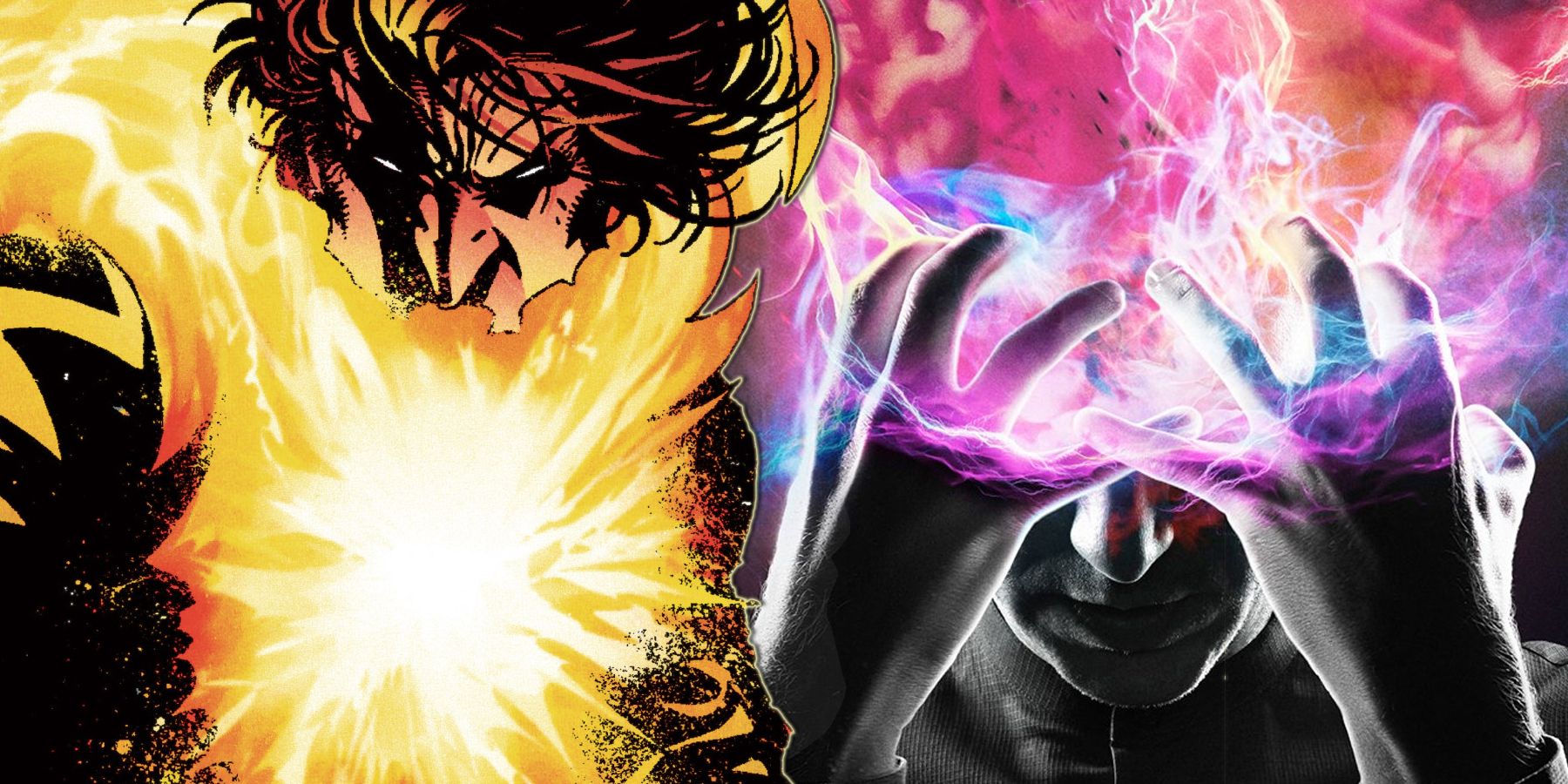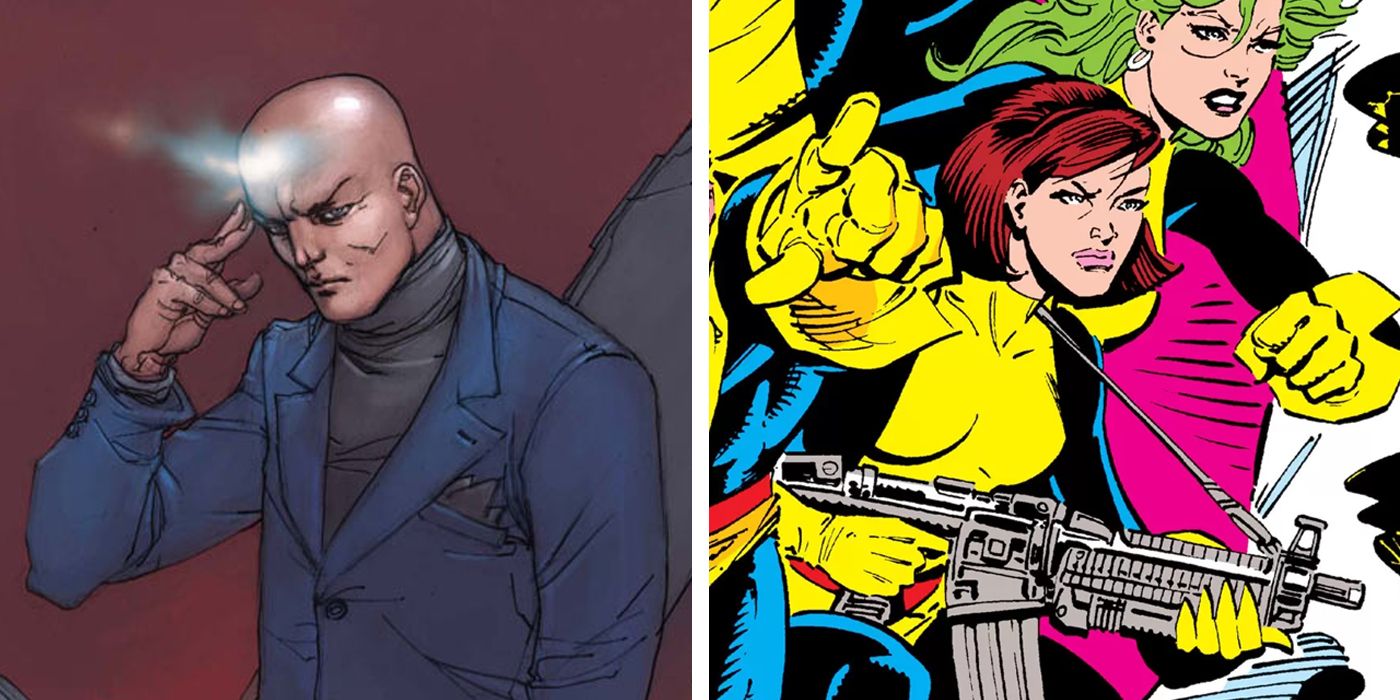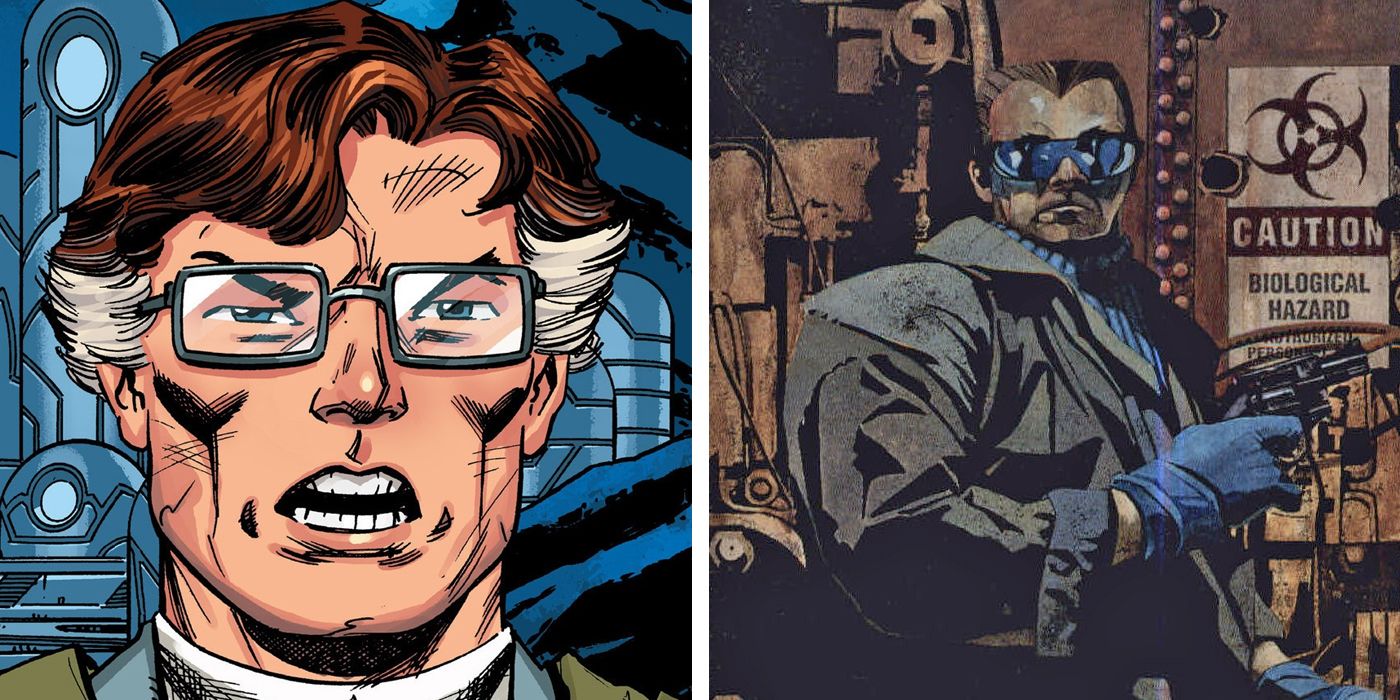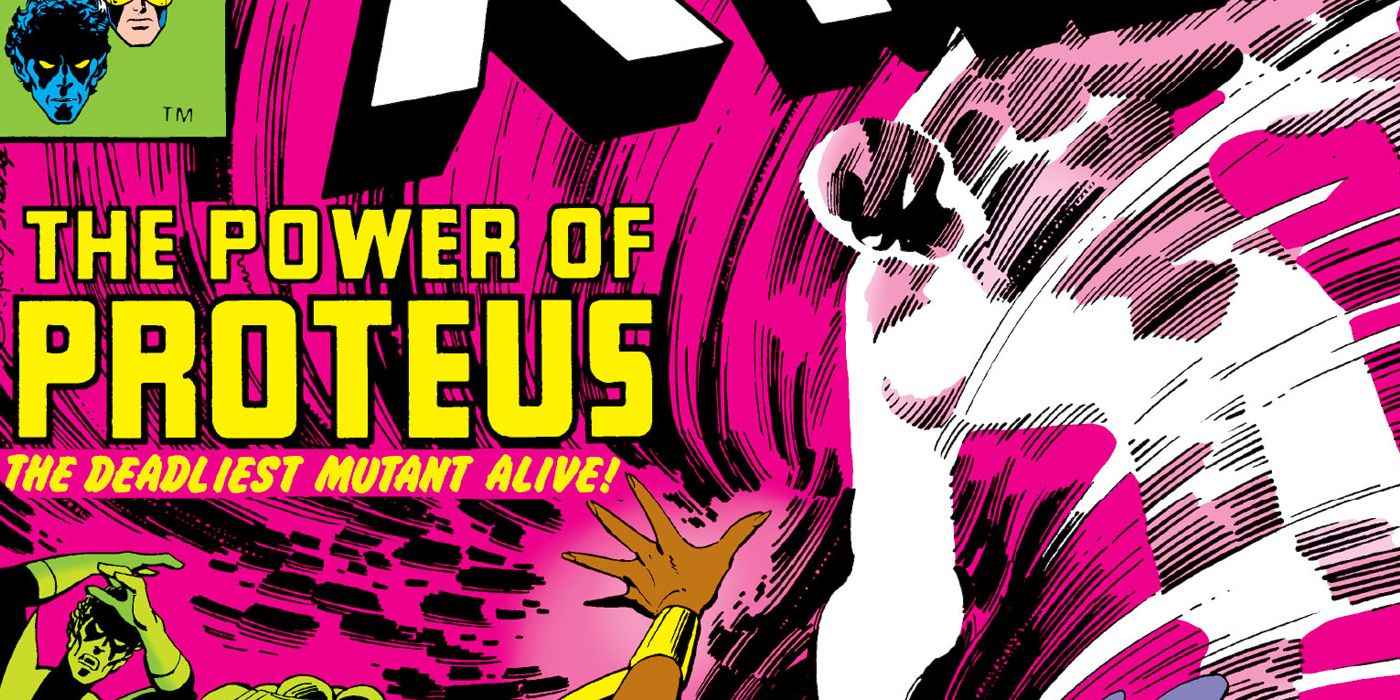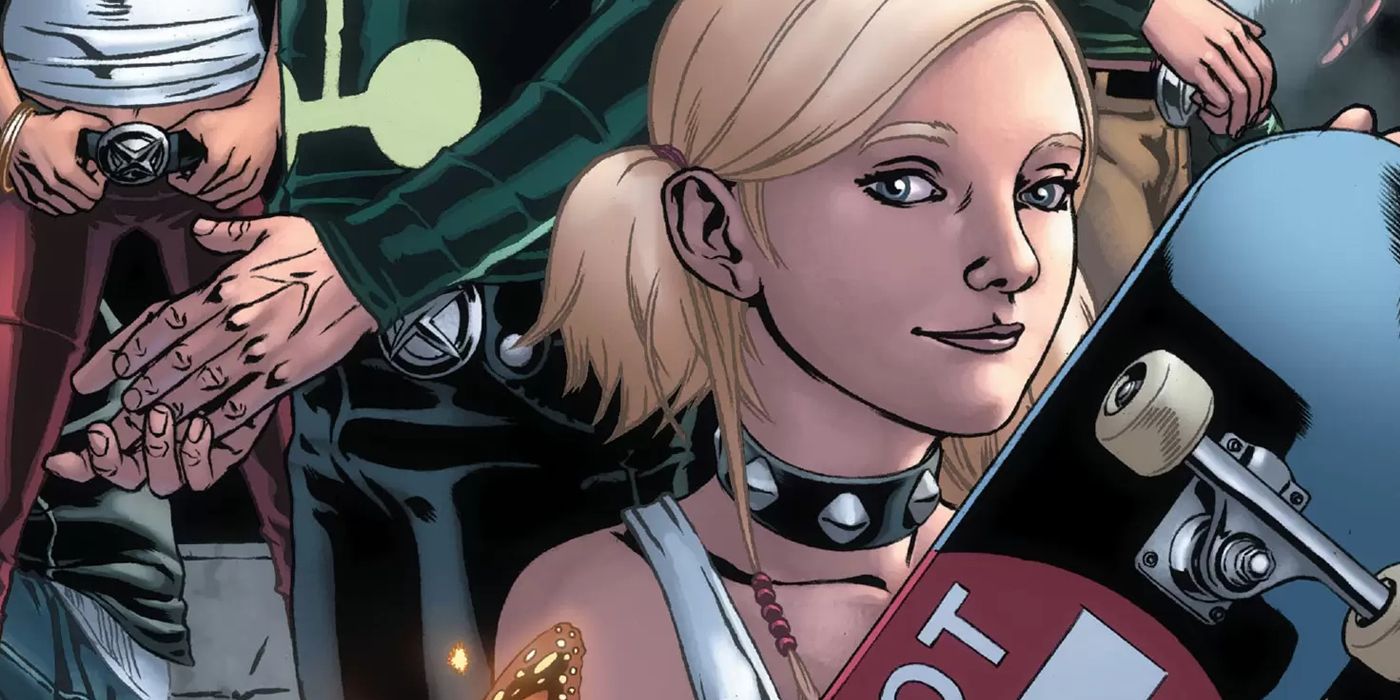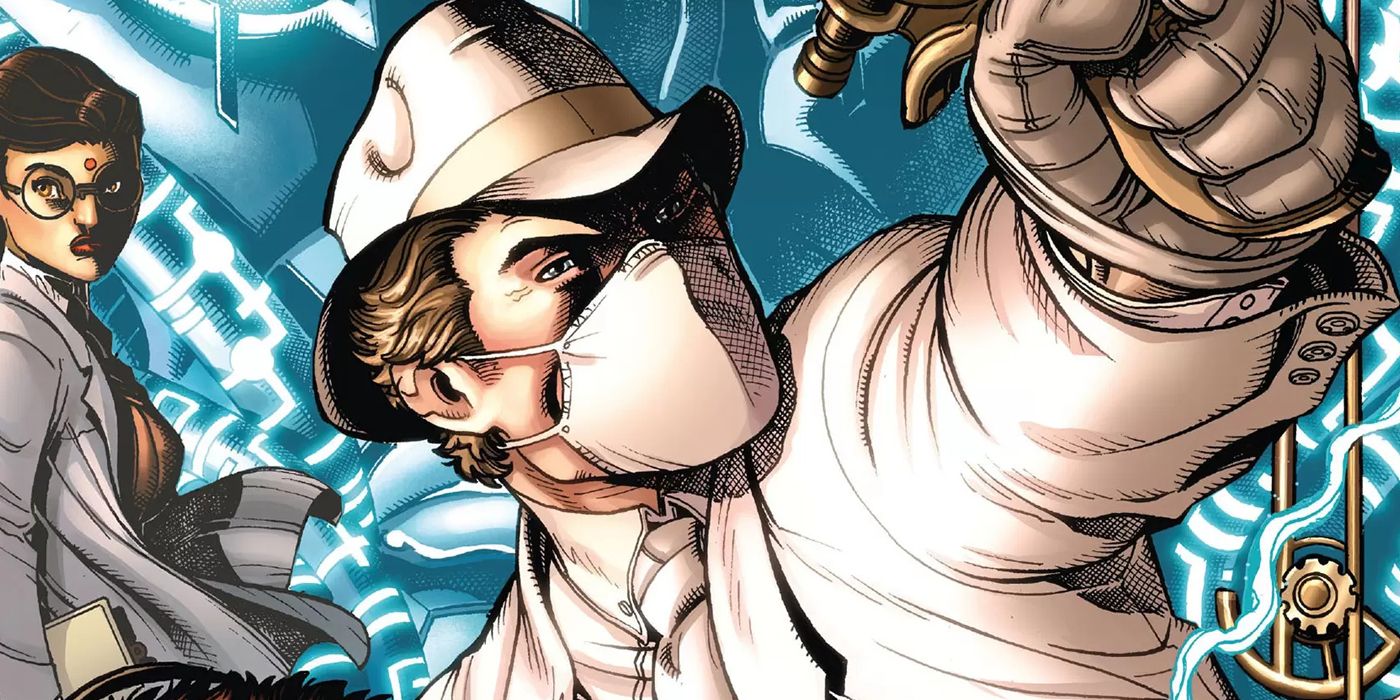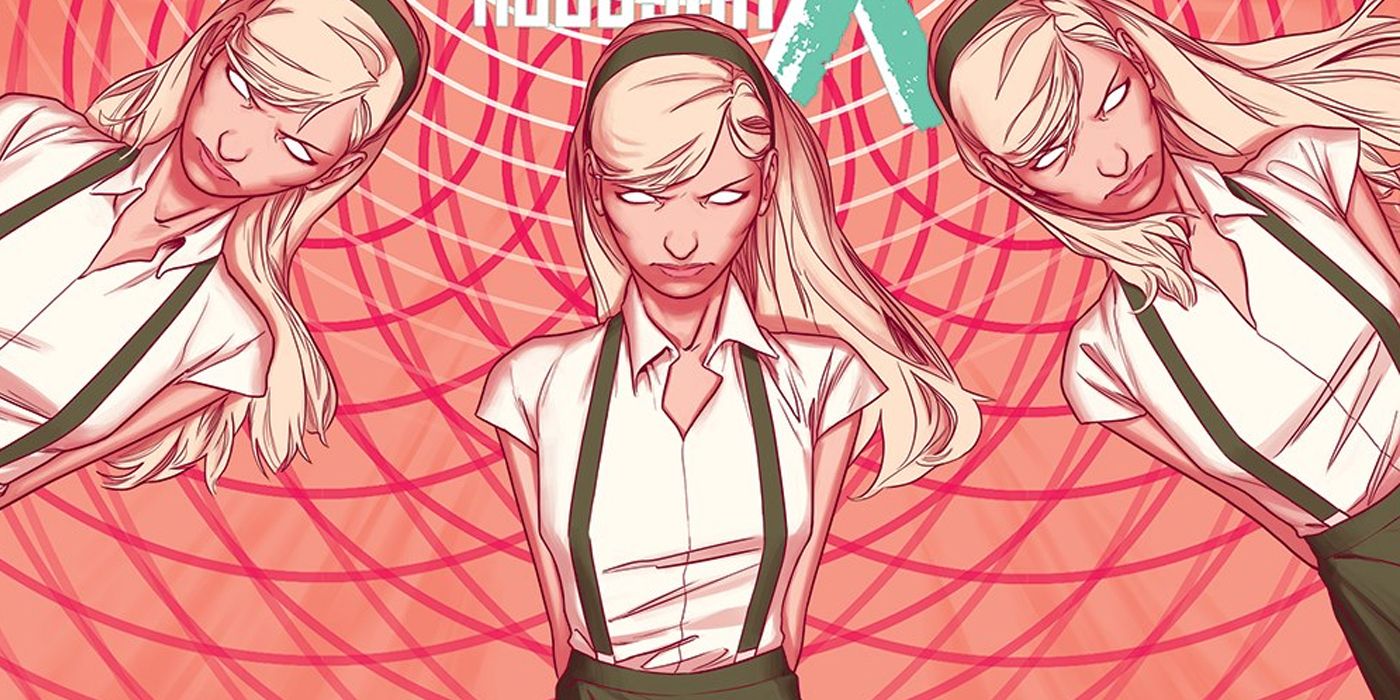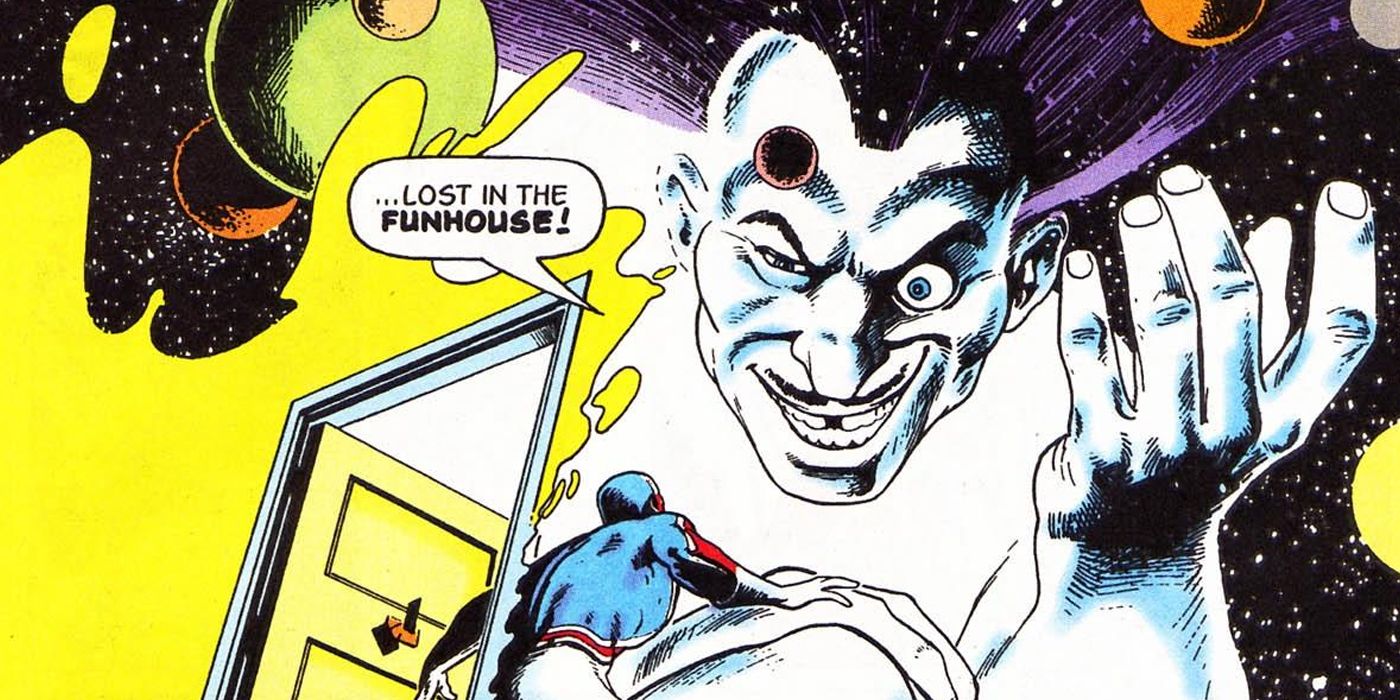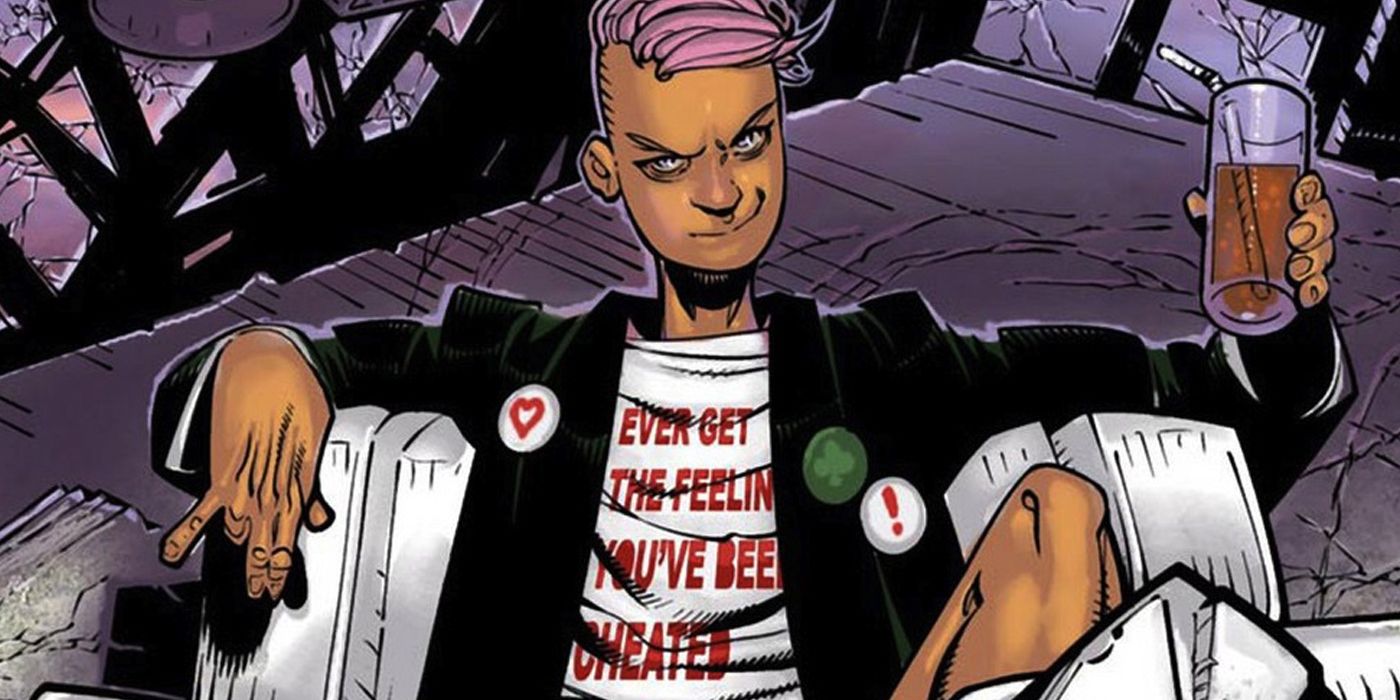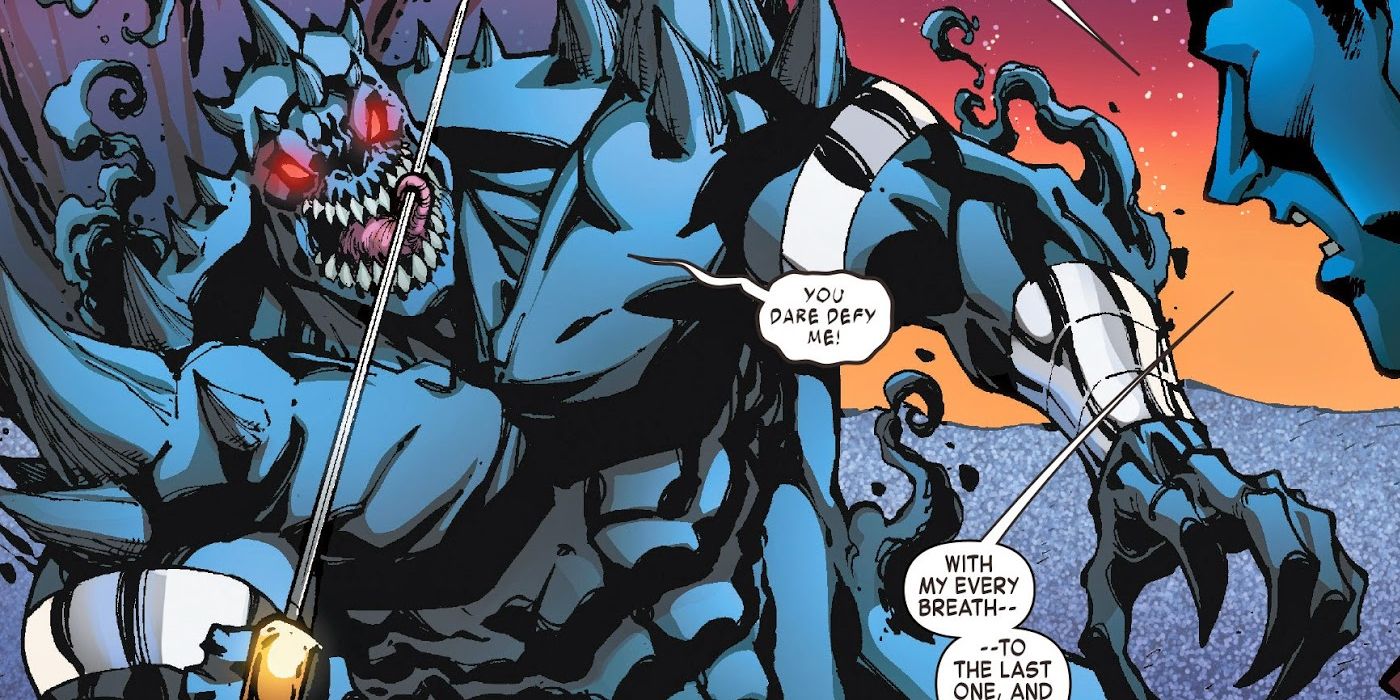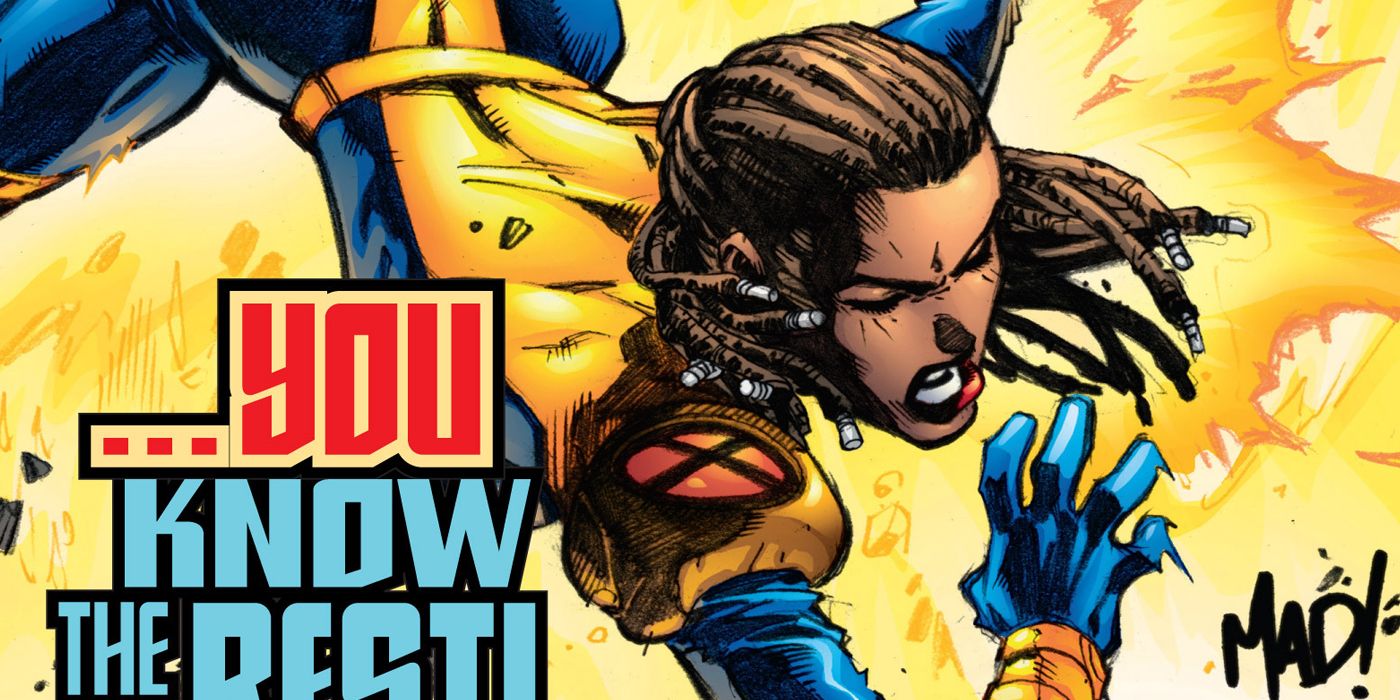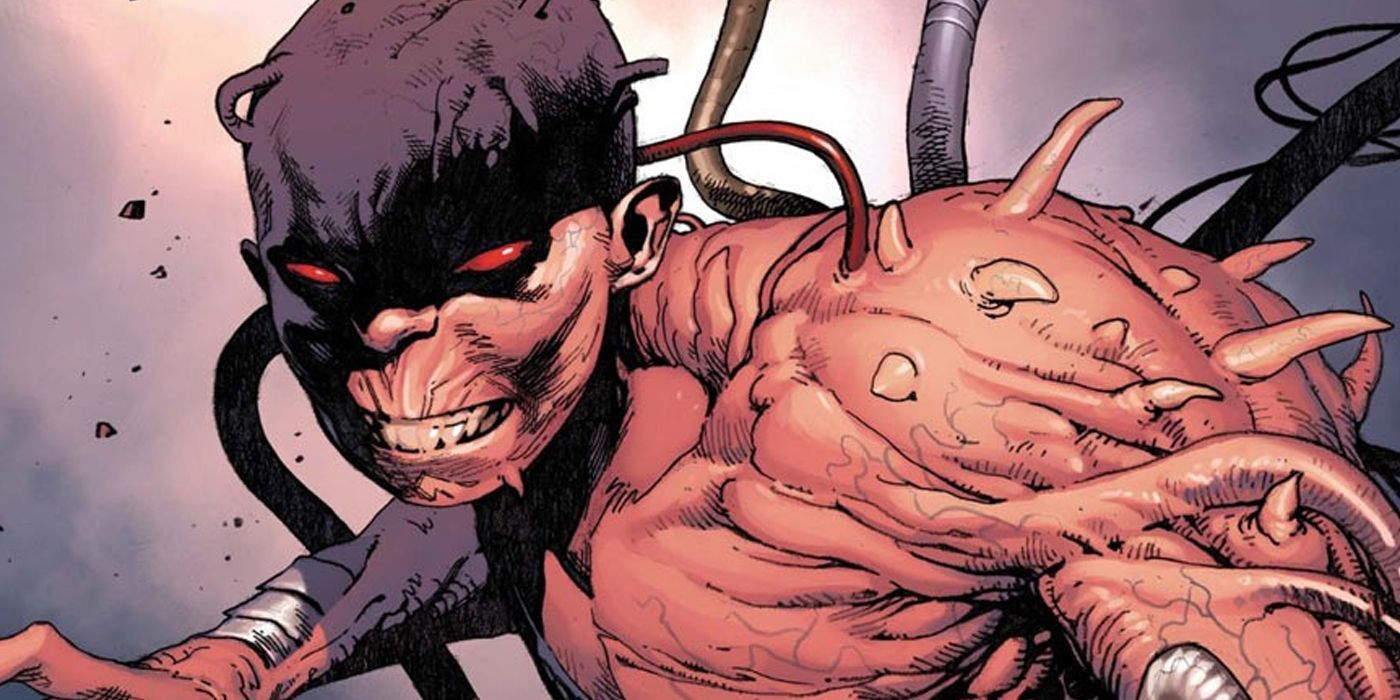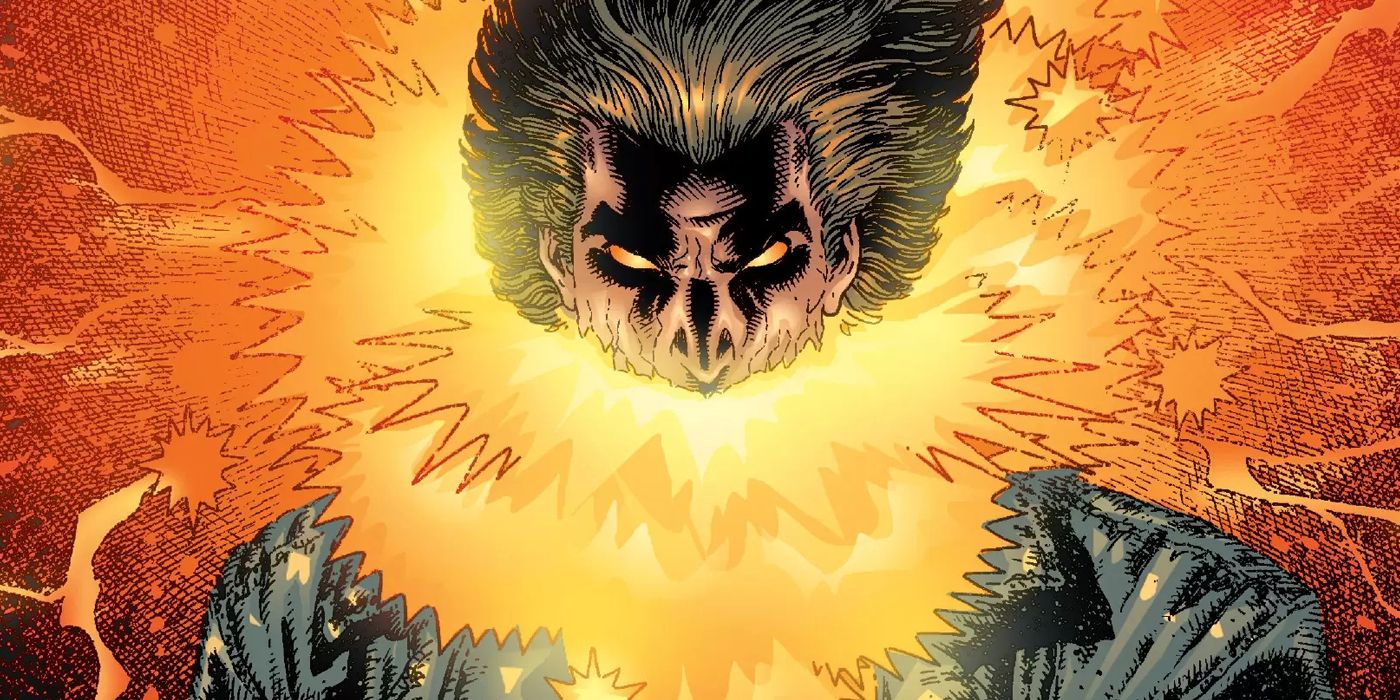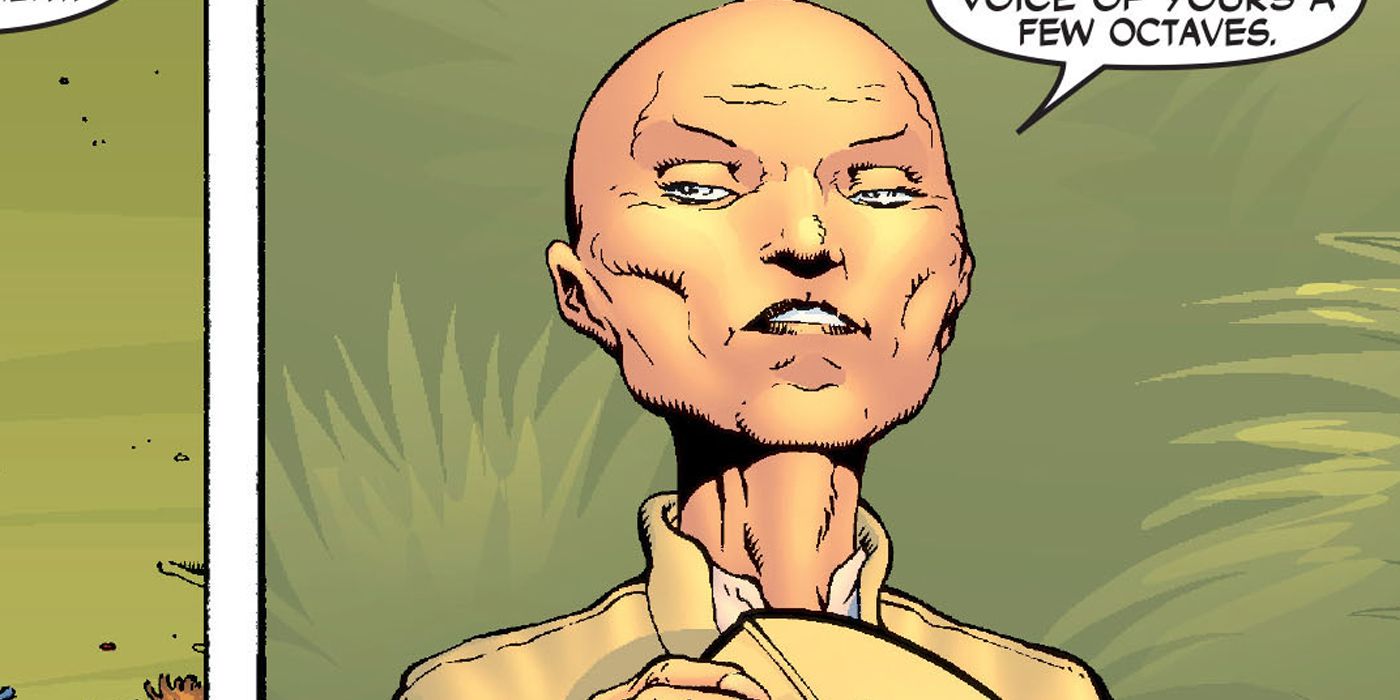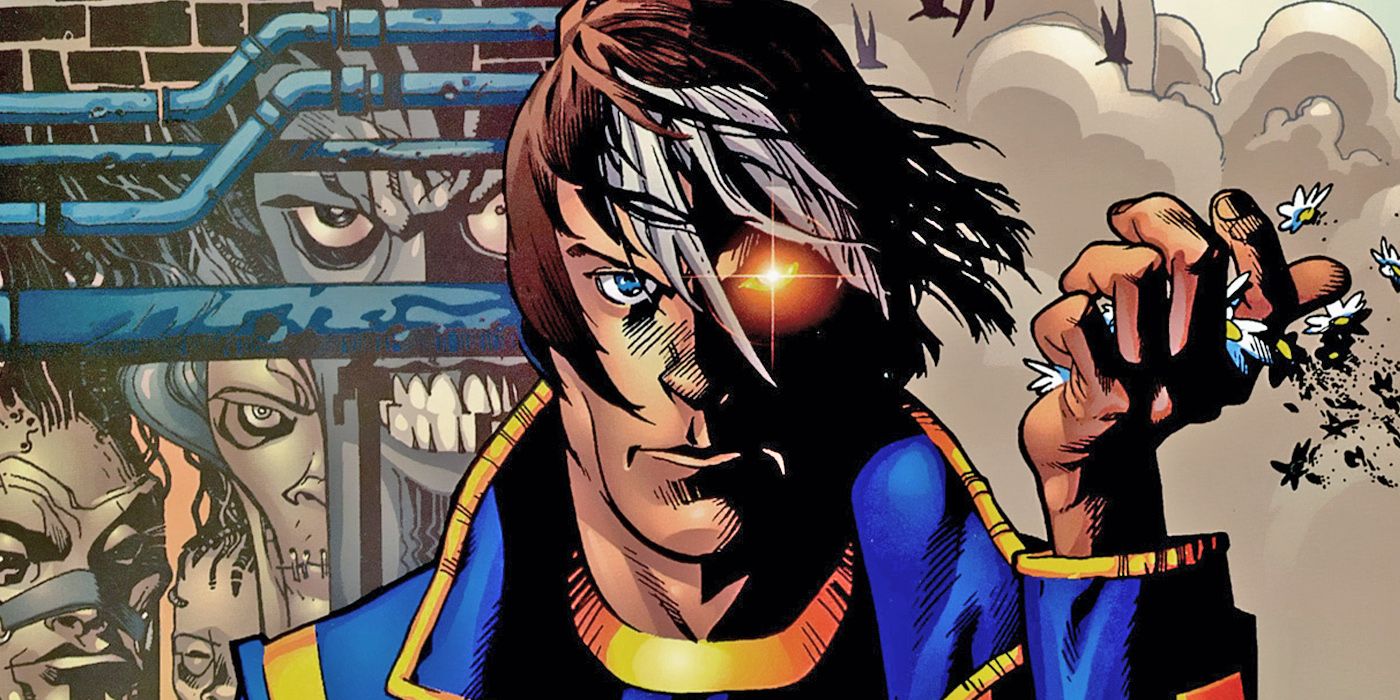With the new FX show “Legion,” one of the X-Men will bring Marvel’s mutants back to television for the first time in years. The show, which was developed by Noah Hawley and stars Dan Stevens as the titular David Haller, is set to eschew the X-franchise’s complex continuity and focus on character-driven stories. While the show will focus on its characters' psychology, it’s unclear how many similarities the show’s Legion will share with the comics’ version of Professor X’s troubled, ultra-powerful son.
RELATED: Legion: 15 Things You Need To Know
Although the show will largely feature original characters, there should be plenty of opportunities to feature some rejigged characters from the world of the X-Men. Now, CBR is taking a look at some X-Men allies and enemies who would be perfect for “Legion.” In this list, well be focusing on characters who seem in-step with the show’s surreal, cerebral tone.
15 PROFESSOR X/MOIRA MACTAGGERT
Since Legion’s debut in 1985’s “New Mutants” #25, by Chris Claremont and Bill Sienkiewicz, Professor X has been an indispensable part of his son’s history. The fraught relationship between the two Omega-level mutants has been one of Legion’s defining features. Legion’s inadvertent patricide caused the Age of Apocalypse, and the fractured relationship between the pair is one of Charles Xavier’s greatest failures. While Xavier’s failings are well-known to comic readers, wider audiences haven’t seen Professor X falter in a major way. While the show seems, at best, tenuously connected to Fox’s X-Men movie universe, "Legion" could still be a way to explore a different side of Xavier.
Likewise, longtime X-Men ally Moira MacTaggert has played a pivotal role in Legion’s life. Haller spent a considerable amount of time with her in her research base on Muir Island. While Rose Byrne played the character as a spy in some of the more recent X-Men movies, Moira’s role as a scientist remains largely unexplored on screen. The apparent separation between the movies and the show could be an advantage here, since it might let audiences see a more comics-accurate version of Moira.
14 DARWIN
If the show changes course and fully embraces Fox's X-Men, Darwin would be the ideal candidate to link “Legion” directly to the movies. Created by Ed Brubaker and Pete Woods in 2006’s “X-Men: Deadly Genesis” #2, Darwin was part of a previously unseen team of X-Men who seemingly died trying to rescue the original X-Men from the mutant island Krakoa. While half of the team died, Darwin’s ability to “reactively evolve” allowed him to survive as a being of pure energy for years before taking physical form again.
Like his comic book counterpart, Edi Gathegi’s Darwin apparently died in 2011’s “X-Men: First Class.” Despite his adaptive abilities, he exploded after Kevin Bacon’s Sebastian Shaw placed a ball of pure energy inside of him. Although the character has been absent from subsequent X-Men films, there’s no reason he can’t take physical form once again in the same way Darwin did in the comics. Since he doesn’t appear to be coming back in the movies anytime soon, Darwin could be used to tie “Legion” directly to the wider Fox’s X-universe.
13 ROBERT KELLY/GRAYDON CREED
Given the themes of persecution that sit at the philosophical heart of the X-Men, any adaption that deals with the struggles of being a mutant needs an anti-mutant antagonist. While there are plenty to choose from, “Legion” could be an opportunity to reintroduce Senator Robert Kelly into the X-Men franchise. Although Bruce Davison’s version of the anti-mutant politician seemed to perish in 2000’s “X-Men,” he could still be alive in the show’s reality or in the rebooted X-Men cinematic universe. Including Senator Kelly in the show could appease longtime comic fans and offer another loose link to the X-Men films.
While Senator Kelly, William Styker and Bolivar Trask have all appeared on film, Graydon Creed still hasn’t made his live action debut. After his 1993 debut in “Uncanny X-Men” #299, by Scott Lobdell and Brandon Peterson, the son of Mystique and Sabretooth ran for president on an anti-mutant platform and was one of the most visible anti-mutant voices of the era until his assassination. While the show would probably drop his famous parents, a human who hates mutants because of his mutant parents could work in the show’s context.
12 PROTEUS
Despite a relatively small number of appearances, Proteus holds a place in the upper echelon of the X-Men’s rogues gallery. The powerful reality warping mutant made his first appearance in 1979’s “Uncanny X-Men” #125, by Chris Claremont, John Byrne and Terry Austin. In the ensuing classic story, Proteus was revealed to be Moira MacTaggert’s son, who had to be raised in seclusion due to his uncontrollable powers. After escaping through his ability to possess people, he carved a trail of destruction before dying in combat with the X-Men.
Given their shared connection to Moira and similarly vast power sets, it’s easy to conflate Legion and Proteus into one being, especially since they were one person in Marvel’s Ultimate Universe. In a vacuum, Proteus almost serves as a dark reflection of who Legion could become if he was consumed by his immense power. Proteus’ ability to jump from body to body could also open up some intriguing, “Twin Peaks”-esque storytelling opportunities in a serial medium.
11 LAYLA MILLER
Originally, Layla Miller was created by Brian Michael Bendis and Olivier Coipel for the 2005 crossover “House of M.” In that alternate reality story, the young girl was one of the few characters who remembered what the real Marvel Universe was supposed to be like. After that crossover was over, writer Peter David brought her into the new incarnation of “X-Factor” where she showcased an extensive knowledge of future events.
That series eventually saw the character develop and grow into adulthood while trapped in a dystopian future, but the younger Layla Miller would work well on “Legion.” In the comics, Legion has been connected to the precognitive mutants Destiny and Blindfold in one way or another. While either of those characters could work on the show, Miller seems like a better fit for the show’s sensibilities. When asked about the scope of her powers in comics, Miller repeatedly states that she simply “knows stuff.” That kind of humor and evasion would fit in with a show that seems to question the nature of mutant powers.
10 DOCTOR NEMESIS
In “Legion,” its title character seeks treatment from several medical professionals with unusual methods. The X-Men’s world is full of mutant mad scientists, and one of them, Doctor Nemesis, could be a good fit for the show. After the WWII-era Ace Magazines character fell into the public domain, Roy Thomas and Dave Hoover brought him to Marvel in 1993’s “Invaders” #1. In the Marvel Universe, the mutant Nemesis helped co-create the original android Human Torch before fighting the Invaders. In 2009, he was recruited by the X-Men for his “self-evolved” intellect and has remained a recurring character in the franchise ever since.
With a personality marked by a biting wit and supreme self-confidence, Dr. Nemesis is a well-defined character that works best in small doses. In an already full cast, the Doctor could prove to be a memorable supporting character who fits the tone of the show. With Dr. Nemesis’ cerebral powers, outlandish treatments and trademark surgical mask, he could also translate to TV without too many alternations.
9 STEPFORD CUCKOOS
Created by Grant Morrison and Ethan Van Sciver in 2001’s “New X-Men” #118, the Stepford Cuckoos are identical mutant sisters who share powerful telepathic abilities. Although two of the five sisters died, Celeste, Mindee and Phoebe Cuckoo have been a steady presence in the X-Men for over a decade. In the comics, the Cuckoos are essentially the teenage clones of Emma Frost, the White Queen. While Frost is one of the defining X-Men of the modern era, January Jones’ version of the character never evolved beyond her villainous roots in 2011’s “X-Men: First Class.”
As other parts of Fox’s X-Men universe begin to introduce the idea of clones, the Stepford Cuckoos could be a way to thematically tie “Legion” into Fox’s past and current feature films. The three identical mutants would make a striking image on screen and would likely lend themselves to the show’s surreal tone, thanks in part to their psychic hive mind.
8 MAD JIM JASPERS
Mad Jim Jaspers was originally created by Dave Thorpe and Alan Davis for the “Captain Britain” feature in the British comic “Marvel Superheroes.” Over the coming years, he was developed by Alan Moore and brought into the main X-Men titles by Chris Claremont. Jaspers was originally depicted as a member of the British Parliament who outlawed superheroes in an alternate reality. With his substantial reality warping powers, Jaspers built the Fury, an ultra powerful hero-killing machine. After reshaping the world in his own bizarre image in the story “Jaspers’ Warp,” his entire reality was destroyed to keep it from spreading into other realms.
While the reality-crashing scope of that story might be beyond the show’s intentions, Jaspers is one of the few mutants with a power set that dwarfs Legion’s. With dual roles as an anti-mutant politician and a powerful mutant himself, Jaspers could make a compelling antagonist on “Legion.” With his substantial abilities, the character could test the limit of the show’s title character and the show’s seemingly fragile world.
7 QUENTIN QUIRE
Along with the idea of fighting anti-mutant sentiment, the idea of fighting mutant supremacy is a big part of the X-Men’s core mission statement. While Magneto and Mystique have represented this idea in most of Fox’s films, “Legion” could give a fan-favorite character a chance to fill that role on the small screen. Quentin Quire, also known as Kid Omega, was created by Grant Morrison and Frank Quitely in 2001’s “New X-Men” #134. Over the following years, the intensely powerful young telepath evolved from a drug-fueled antagonist into one of the X-Men’s most powerful and promising students.
With his cerebral powers and anarchic nature, Quire could be the perfect vessel to inject mutant politics into “Legion’s” world. Given the character’s youth and his somewhat similar powers, it’s not difficult to imagine Quire as a peer or dark reflection of Legion. In comics, both of those characters have dealt with ideas about destiny and living up to expectations, and either of those themes seem like fair ground for the show.
6 SHADOW KING
When Chris Claremont and John Byrne introduced the Shadow King in 1979’s “Uncanny X-Men” #117, he was set to become Professor X’s chief rival and a major X-Men threat over the coming years. Although the Shadow King may have originated as the living embodiment of the dark side of human consciousness, his most familiar form comes in the mutant Amahl Farouk. After an early encounter with the body possessing telepath on the astral plane, Xavier was inspired to form the X-Men. While Claremont’s full plans for the powerful psychic entity never came to fruition, he still became a major X-Men antagonist.
In comics, the Shadow King played a meaningful role in Legion’s history. For a time, Legion was possessed by the Shadow King, and he killed the precognitive villain Destiny while under his thrall. Given the Shadow King’s mysterious nature, he could be a fitting for television’s Legion too. Since promotional materials for the show have already mentioned the astral plane, the Shadow King could easily appear as an enemy there or as an earthbound force that jumps from body to body.
5 CECILIA REYES
Cecilia Reyes is one of the few X-Men with actual medical training. Created by Scott Lobdell and Carlos Pacheco in 1997’s “X-Men” #65, Dr. Reyes has been a somewhat reluctant member of the X-Men since her debut. Since the force field that constantly surrounds her body isn’t the most combat-centric mutant power, she’s usually served as the team’s physician during her irregular appearances.
While Dr. Reyes was officially a member of the X-Men, her relatively minor role and spotty appearances in the team’s history make her an unlikely candidate to appear in film. Given her medical background and budget-friendly powers, she could be a better fit for “Legion.” Outside of the context of the team, Dr. Reyes is just a surgeon who struggled with accepting her powers. That stripped down take on the character could fit in any number of small screen scenarios, including “Legion” or the other unnamed Fox X-Men show that’s currently in development.
4 ZERO
The mutant Kenji Uedo, also known as Zero, was created by Kieron Gillen, Matt Fraction and Salvador Espin in 2011’s “Generation Hope” #1. In a direct homage to Katshuiro Otomo’s landmark manga and anime “Akira,” Uedo had limited telepathic powers and almost uncontrollable bio-mechanical powers. As an artist with deep distrust of his young team’s leader Hope Summers, he was an isolated and semi-reluctant member of a teen X-Men squad and ultimately died after turning against his teammates.
With a strong nihilistic attitude, Kenji could be an intriguing philosophical counterpoint to the other characters' worldviews. While his full power set may not be the most visually feasible on a television show’s budget, the idea of a mutant who uses his powers to make art could be an intriguing twist on the usual X-Men formula. Zero is also one of the few characters with any kind of resistance to telepathy, which could be a useful plot device in a series centered on a powerful telepath.
3 CHAMBER
As a member of "Generation X," Chamber was one of the X-Men’s pupils during their most famous era. Created by Scott Lobdell and Chris Bachalo in 1994, part of Chamber’s face and chest caved in when his psionic abilities manifested. Only able to communicate through his telepathic powers, he came to terms with his visually distinct powers over the course of that series and eventually graduated to become a full-fledged member of the X-Men. In the Legion-centric 2013 series “X-Men: Legacy,” he was one of the character’s primary contacts with the X-Men.
In the same way that Legion’s powers almost destroyed his mind, Chamber’s powers almost destroyed his body. On “Legion,” Chamber could follow the example of his comic book counterpart and serve as a kind of foil to the show’s title character. While Chamber’s powers are most decidedly not TV-friendly, the bandages that hold them in could make a striking visual image on the small screen.
2 CASSANDRA NOVA
Even though she’s over a decade and a half old, Cassandra Nova is still one of the newest major X-Men villains. Created by Grant Morrison and Frank Quitely in 2001’s “New X-Men” #114, Nova was originally a parasitic psychic entity who took the form of Professor X’s evil twin sister. After growing to adulthood, she was responsible for wiping out the mutant nation of Genosha and engaged in a psychic campaign to destroy the X-Men.
From a thematic standpoint, an evil telepath like Cassandra Nova would make a logical antagonist on “Legion.” After several major feature films, the kindly Charles Xavier is a familiar character to a wider pop cultural audience. By including Nova in “Legion,” the show’s creators could upend the familiar iconography of Professor X and answer comic fans who want to see Xavier in the series. Although both characters share a familial connection to Xavier, they haven’t encountered each other yet in a major way. By including Nova, “Legion” could beat the comics to the punch by including that inevitable conflict.
1 X-MAN
Even before its debut, one of “Legion’s” greatest challenges is untying the Gordian Knot of continuity that surrounds Legion. By isolating the character, the show’s creators seem to have found a way to foreground a compelling story that has been largely ignored in the operatic flash of the X-Men’s world. Another character who could benefit from that same approach is the ultra powerful telepath Nate Grey, also known as X-Man. Originally created by Jeph Loeb and Steve Skroce as an alternate reality version of Cable, X-Man became part of the main Marvel Universe and eventually learned to master his previously uncontrollable powers.
In the same way that several of the characters on this list could represent dark reflections of Legion, X-Man could represent a lighter path for the character. Stripped of his complex roots, X-Man could serve as a peer or a kind of mentor on the show. By drawing from the character’s brief reinvention as a “mutant shaman,” Grey could serve the show as a more philosophical kind of mutant leader who could help guide Legion along as he learns to tame his wild powers.
“Legion” premieres Wednesday, Feb. 8, at 10 p.m. ET/PT on FX. Stay tuned to CBR for all the latest on "Legion" and Fox's other upcoming X-Men projects.
Let us know who you want to see on "Legion" in the comments below!

